Guide on Resurface and Replace Cabinets:
Introduction Homeowners often contemplate whether to resurface or replace their cabinets during kitchen renovations. This guide will help you understand the considerations involved in making this decision.
Resurfacing Cabinets Resurfacing cabinets involves reviving the appearance of your existing cabinets. Here’s a step-by-step guide:
Revamping the look of your kitchen doesn’t always necessitate a complete cabinet overhaul. In fact, with resurfacing cabinets, you can breathe new life into your kitchen space without the hefty price tag. This step-by-step guide will walk you through the process of resurfacing cabinets, transforming your kitchen into a fresh, inviting haven.
- Assessment: Ensure Structural Integrity Before diving into the resurfacing process, it’s crucial to assess the structural integrity of your cabinets. Check for any signs of damage or sagging shelves. Cabinets should be sturdy and in good shape to proceed with resurfacing. If you find any issues, consider repairs or replacements as needed.
- Cleaning: Remove Grease and Grime The first step in resurfacing is to thoroughly clean the cabinet surfaces. Over time, cabinets accumulate grease, grime, and dirt. Use a gentle yet effective cleaner to remove these layers of buildup. TSP (Trisodium Phosphate) is an excellent choice for degreasing. Ensure all surfaces are dry before proceeding.
- Sanding: Prep for Refinishing Lightly sanding the cabinet surfaces is essential to create a smooth, paint-friendly canvas. Start by using a fine-grit sandpaper (around 120-150 grit) to remove any imperfections or rough spots. Sand along the wood grain to avoid unsightly marks. After sanding, wipe down the cabinets to remove dust and debris.
- Painting or Refinishing: Transforming the Look This is the stage where the magic happens. You can choose between painting or applying a new finish to your cabinets, depending on your desired look.
- Painting: Select a high-quality paint suitable for cabinets. Opt for latex or oil-based paints with a semi-gloss or satin finish for durability and easy cleaning. Apply at least two coats, allowing proper drying time between each coat. A paint sprayer can help achieve a smooth, professional finish.
- Refinishing: If you prefer to showcase the natural beauty of wood, consider refinishing. This entails stripping the existing finish, applying a new stain or varnish, and sealing the cabinets. This method brings out the wood’s grain and texture for a timeless, elegant appearance.
- New Hardware: The Finishing Touch To complete the cabinet transformation, replace the cabinet knobs, handles, and hinges. This is an opportunity to add a personal touch to your kitchen’s aesthetic. Choose hardware that complements your kitchen’s style, whether it’s classic, modern, or somewhere in between.
Resurfacing cabinets is a cost-effective and environmentally friendly way to refresh your kitchen’s look. By following this step-by-step guide, you can achieve a stunning transformation without the expense and hassle of replacing your entire cabinetry. Assess the condition of your cabinets, clean and prep them meticulously, and choose between painting or refinishing to suit your desired aesthetic. Finally, don’t forget to upgrade the hardware for a polished, cohesive appearance. With these steps, your kitchen will soon become a space you’ll be proud to show off.
Replacing Cabinets Replacing cabinets entails a more extensive process:
When your kitchen is in need of a complete makeover, replacing cabinets can provide a fresh start and a stunning transformation. This comprehensive guide will take you through the step-by-step process of replacing cabinets, from demolition to the final touches, ensuring that your new cabinets fit your kitchen’s needs and style.
- Demolition: Removing the Old Cabinets The first step in replacing cabinets is to clear the slate. Remove the existing cabinets entirely, including doors, drawers, and all associated hardware. Carefully dismantle and dispose of the old cabinets, taking care to avoid any damage to surrounding walls or surfaces.
- Design and Layout: Planning for Functionality Before selecting new cabinets, it’s crucial to plan the layout. Assess your kitchen’s needs and consider factors such as storage, workflow, and aesthetics. This stage involves creating a layout that optimizes space and functionality, ensuring the cabinets are designed to meet your specific requirements.
- Select New Cabinets: Materials, Styles, and Finishes Choosing new cabinets is a significant decision in the replacement process. Consider the following:
- Materials: Cabinets are available in various materials, including wood, laminate, and metal. Wood cabinets are a popular choice for their durability and classic appeal.
- Styles: Select a cabinet style that aligns with your kitchen’s overall design. Options range from traditional to contemporary, allowing you to create the desired ambiance.
- Finishes: Decide on a finish that complements your kitchen’s aesthetic. Choices include natural wood finishes, painted surfaces, or even custom finishes to match your unique vision.
- Installation: Precise Measurements and Alignment Installing the new cabinets is a critical step in the process. This requires precision and expertise to ensure the cabinets are level, plumb, and properly aligned. It’s often recommended to hire professional installers to guarantee a seamless fit and avoid any potential issues.
- Hardware and Accessories: The Final Touches To enhance both the functionality and appearance of your new cabinets, add hardware, drawer organizers, and other accessories. Cabinet knobs, handles, and pulls can add a personal touch and tie together your kitchen’s style. Consider pull-out shelves, dividers, and organizers to maximize storage efficiency.
Replacing cabinets is a substantial undertaking that can breathe new life into your kitchen. By following this comprehensive guide, you can navigate the process with confidence. Start with demolition to clear the way for your new cabinets. Plan the layout to ensure optimal functionality, and carefully select cabinets that match your kitchen’s style and needs. Professional installation is essential to ensure a precise fit. Finally, add the finishing touches with hardware and accessories that enhance both the functionality and aesthetics of your kitchen. With these steps, you’ll be well on your way to creating the kitchen of your dreams.
Cost Comparison Comparing the costs of resurfacing and replacing cabinets:
Reviving your kitchen’s appearance often involves a choice between resurfacing your existing cabinets or replacing them entirely. While both options can yield stunning results, they come with distinct cost implications. In this article, we’ll provide a detailed cost comparison of resurfacing and replacing cabinets, helping you make an informed decision that aligns with your budget and design goals.
Resurfacing Cabinets: A Budget-Friendly Option
Resurfacing cabinets is an excellent choice for those looking to refresh their kitchen without breaking the bank. Here’s a breakdown of the costs involved:
- Materials: Resurfacing primarily requires paint or refinishing materials, which are relatively affordable. High-quality paint or refinishing kits can cost anywhere from $100 to $500, depending on the size of your kitchen and your choice of products.
- Labor: While professional help can be hired for resurfacing, many homeowners opt for a DIY approach to save on labor costs. If you decide to hire a professional, labor costs can range from $1,000 to $3,000, but DIYers can significantly reduce this expense.
- Additional Costs: You may need to budget for minor supplies such as sandpaper, brushes, and cleaning materials, which typically amount to less than $100.
In total, the cost of resurfacing cabinets generally falls within the range of $200 to $3,500, depending on the size of your kitchen, the quality of materials chosen, and whether you DIY or hire a professional.
Replacing Cabinets: A Significant Investment
Replacing cabinets involves a more extensive process, resulting in a more substantial investment. Here’s a breakdown of the costs:
- New Cabinets: The most significant expense in cabinet replacement is the cost of purchasing new cabinets. Prices vary widely based on the material, style, and size of the cabinets. Stock cabinets can start at around $100 per linear foot, while custom cabinets can range from $500 to $1,500 per linear foot. For a standard-sized kitchen with 10-12 linear feet of cabinets, you can expect to spend anywhere from $1,000 to $18,000 or more.
- Labor: Professional installation is recommended when replacing cabinets to ensure a precise fit and proper alignment. Installation costs can range from $2,000 to $8,000 or more, depending on the complexity of the project and your location.
- Additional Costs: Don’t forget to budget for additional expenses such as hardware, accessories, and any modifications to plumbing or electrical work that may be required.
In total, replacing cabinets can be a more significant investment, with costs ranging from $3,000 to $26,000 or higher for a standard-sized kitchen.
Making the Right Choice for Your Budget
When it comes to resurfacing vs. replacing cabinets, the choice ultimately depends on your budget and the level of transformation you desire. Resurfacing is generally the more budget-friendly option, with costs typically ranging from a few hundred dollars to a few thousand dollars. On the other hand, replacing cabinets can be a more significant investment, often ranging from several thousand dollars to tens of thousands of dollars. Consider your budget, the condition of your existing cabinets, and your long-term design goals to make the right choice for your kitchen renovation project.
When to Choose Each Option Consider the following factors when deciding between resurfacing and replacing:
Choosing between resurfacing and replacing cabinets is a pivotal decision in any kitchen renovation. This article aims to provide you with insights on when to opt for each option based on key considerations. By evaluating factors like cabinet condition, budget, and layout changes, you can make an informed choice that aligns with your design goals and financial constraints.
Resurfacing Cabinets: A Wise Choice for Cosmetic Updates
Resurfacing cabinets is an excellent option when your existing cabinets are still in good structural condition but require a fresh look. Here are the key factors to consider:
- Cabinet Condition: If your cabinets are structurally sound and free from major issues like warping or damage, resurfacing is the ideal solution. This process focuses on enhancing the appearance of the cabinets without the need for a complete overhaul.
- Budget Constraints: Resurfacing is a budget-friendly option, making it perfect for homeowners who want to breathe new life into their kitchen without a significant financial investment. It allows you to achieve a stunning transformation at a fraction of the cost of replacing cabinets.
- Cosmetic Updates: If your main goal is to update the color, finish, or style of your cabinets, resurfacing provides a cost-effective means to achieve this. It’s particularly suitable for those who are content with the current layout and functionality of their kitchen.
Replacing Cabinets: When a Fresh Start is Necessary
In certain situations, replacing cabinets becomes the more practical choice. Consider the following factors:
- Cabinet Deterioration or Outdated Design: If your cabinets are showing signs of wear and tear, such as sagging shelves, water damage, or outdated design, replacement is often the best course of action. This ensures you have cabinets that are not only aesthetically pleasing but also functionally reliable.
- Layout Changes: If you’re planning significant alterations to your kitchen’s layout, such as adding an island or changing the arrangement of appliances, it may necessitate the installation of new cabinets. This ensures that the cabinets are tailored to fit the new configuration seamlessly.
- Long-Term Investment: While replacing cabinets involves a higher initial investment, it can be a wise long-term choice, especially if you plan to stay in your home for many years. Quality new cabinets can add substantial value to your property and provide a fresh, modern look for years to come.
Choosing the Right Path for Your Kitchen Transformation
Deciding between resurfacing and replacing cabinets requires careful consideration of your budget, the condition of your current cabinets, and any planned layout changes. If your cabinets are structurally sound and you’re aiming for a budget-friendly update, resurfacing is likely the best choice. On the other hand, if your cabinets are deteriorating or you’re making significant layout changes, investing in new cabinets is a wise move for the long-term. By evaluating these key factors, you can embark on your kitchen renovation with confidence and a clear vision of the path forward.
DIY vs. Professional Help
In the realm of kitchen cabinet transformations, the choice between DIY (Do It Yourself) and professional assistance is a crucial aspect of the decision-making process. This article aims to shed light on the considerations for each option in the context of resurfacing and replacing cabinets. By understanding the nuances, you can determine the best approach for your skill level and project requirements.
Resurfacing Cabinets: DIY Potential with Professional Touch
Resurfacing cabinets can be a rewarding DIY project for those with some woodworking and refinishing skills. However, it’s essential to recognize the potential need for professional assistance in certain situations:
- DIY Resurfacing:
- Skills Required: If you possess woodworking and refinishing skills, resurfacing can be a satisfying DIY project. It involves tasks like sanding, painting, or applying a new finish, which can be accomplished with the right tools and techniques.
- Cost Savings: DIY resurfacing can significantly reduce labor costs, making it an attractive choice for budget-conscious homeowners.
- Personalization: DIYers have the freedom to choose colors, finishes, and techniques that align with their vision for the kitchen.
- Professional Results:
- Complex Surfaces: Cabinets with intricate designs or challenging surfaces may require professional expertise to achieve a flawless finish.
- Quality Finish: Achieving a high-quality, durable finish often necessitates the skills and experience of a professional painter or refinisher.
- Time Constraints: DIY resurfacing can be time-consuming, and professionals may offer a quicker turnaround for a polished result.
Replacing Cabinets: Professional Expertise is Key
Replacing cabinets is typically a more complex undertaking that almost always requires professional help due to the following factors:
- Demolition and Installation:
- Precise Measurements: Accurate measurements are crucial for new cabinets to fit seamlessly. Professionals have the tools and expertise to ensure precise measurements and alignment.
- Demolition: Removing old cabinets without causing damage to the surrounding area can be challenging. Professionals can execute this task safely and efficiently.
- Complexity and Expertise:
- Customization: Custom cabinetry, if chosen, demands precise craftsmanship that is best left to professionals.
- Wiring and Plumbing: If changes to electrical or plumbing connections are necessary due to layout alterations, professional expertise is essential to ensure safety and compliance with building codes.
- Warranty and Quality Assurance:
- Warranty Coverage: Many cabinet manufacturers offer warranties that require professional installation to maintain their validity.
- Quality Assurance: Professional installers guarantee a level of quality and craftsmanship that ensures the cabinets will perform as intended.
Balancing Skills and Complexity
When deciding whether to tackle a cabinet project on your own or enlist professional assistance, consider the complexity of the task, your skill level, and your budget. Resurfacing cabinets can be a gratifying DIY project for those with woodworking and refinishing skills, but professionals may be needed for complex surfaces or a high-quality finish. Replacing cabinets, on the other hand, typically demands professional help due to precise measurements, demolition, and installation requirements. Balancing your skills with the project’s complexity will guide you toward the right choice for your kitchen renovation.
- Resurfacing: A DIY project for those with some woodworking and refinishing skills. However, professional results may require a skilled hand.
- Replacing: Typically requires professional help for demolition, precise measurements, and installation to ensure a seamless fit.
Cabinet Styles and Trends Explore popular cabinet styles and trends to gather inspiration for your project, whether you choose to resurface or replace.
When embarking on a kitchen cabinet renovation project, staying updated with the latest styles and trends can be a source of inspiration. Whether you opt for resurfacing your existing cabinets or replacing them entirely, understanding the current cabinet design landscape can help you achieve the kitchen of your dreams. In this article, we’ll explore some popular cabinet styles and trends to ignite your creative vision.
1. Shaker Cabinets: Timeless Elegance
Style: Shaker cabinets are known for their clean lines, recessed panel doors, and timeless simplicity. They effortlessly complement various kitchen aesthetics, from traditional to modern.
Trend: Shaker cabinets continue to be a top choice, offering versatility and a classic look that withstands the test of time. They can be personalized with different finishes and hardware to match your desired style.
2. Open Shelving: A Contemporary Twist
Style: Open shelving is all about showcasing your kitchenware and décor. It replaces traditional closed cabinets with open, accessible shelves that add a touch of contemporary charm.
Trend: Open shelving has gained popularity for its ability to create an airy and spacious feel in the kitchen. It’s perfect for displaying stylish dinnerware, glassware, and decorative items. Just remember, it requires a commitment to keeping items organized and clutter-free.
3. Two-Tone Cabinets: Mixing and Matching
Style: Two-tone cabinets involve using different colors or finishes for upper and lower cabinets. This style adds depth and visual interest to your kitchen.
Trend: Mixing cabinet colors or finishes is a trend that’s here to stay. It allows you to create contrast and balance in your kitchen design. For example, pairing white upper cabinets with deep, rich-colored lower cabinets can make a striking statement.
4. Minimalist and Handleless Cabinets: Sleek Simplicity
Style: Minimalist and handleless cabinets feature sleek, unadorned surfaces with hidden handles or push-to-open mechanisms. This style exudes a sense of modern sophistication.
Trend: The minimalist look is on the rise, driven by the desire for clean lines and a clutter-free kitchen. Handleless cabinets create a seamless appearance that’s both functional and aesthetically pleasing.
5. Glass-Front Cabinets: Elegant Transparency
Style: Glass-front cabinets add an element of elegance and sophistication to your kitchen. They feature glass panels in place of traditional cabinet doors.
Trend: Glass-front cabinets are a popular choice for showcasing fine china, glassware, or collectibles. They provide a sense of openness while keeping items protected from dust and dirt.
6. Vintage and Rustic Cabinets: Nostalgic Charm
Style: Vintage and rustic cabinets incorporate distressed finishes, reclaimed wood, and antique hardware for a charming, nostalgic appeal.
Trend: The vintage and rustic look continues to captivate those seeking a warm and inviting kitchen ambiance. It pairs well with farmhouse and cottage-style kitchens, creating a cozy, lived-in atmosphere.
Your Dream Kitchen Exploring cabinet styles and trends can help you define your design preferences and embark on your kitchen renovation with confidence. Whether you choose to resurface your existing cabinets or opt for a complete replacement, these styles and trends offer a wealth of inspiration. Remember to blend your personal style with functional considerations to create a kitchen that’s not only stylish but also tailored to your specific needs and lifestyle.
Conclusion The decision to resurface or replace cabinets depends on your budget, cabinet
condition, and renovation goals. Both options have their pros and cons, so weigh them carefully to make an informed decision that suits your needs and preferences.
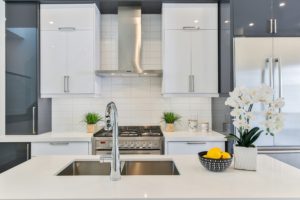
Clever Storage Ideas for Small Kitchens: Maximizing Every Inch
Handling the difficulties of a little kitchen calls for a combination of imagination and methodical preparation. In an attempt to create a kitchen that is

Why White Custom Kitchen Cabinets Are Timelessly Trendy
The search for a kitchen makeover design that endures over time while maintaining style and functionality is comparable to searching for the holy grail of
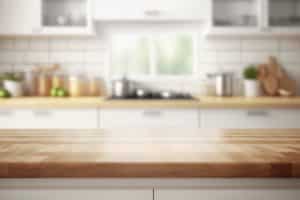
Revamping Your Kitchen with Professional Cabinet Installation
Bringing new vitality to the center of your house is what a kitchen makeover entails, not merely painting it or swapping out outdated appliances. A
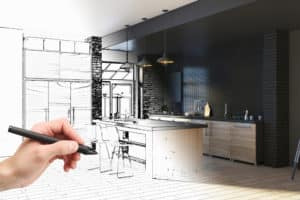
Adding Stone Surfaces into Your Home: Flooring Ideas
When it comes to interior design, the materials used may reveal a lot about the personality of a house and the aspirations of its occupants.
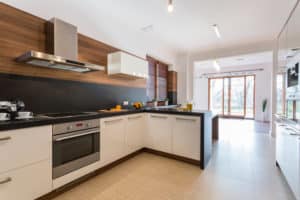
Maine Kitchen Design: Blending Functionality with Aesthetic Appeal
Starting a kitchen design project is a fascinating chance to combine practicality and visual appeal—a concept that is fundamental to Maine houses. This dual approach
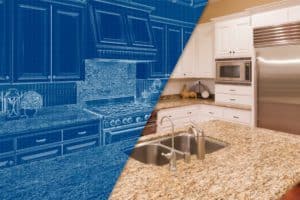
Why Custom Kitchen Cabinetry is the Perfect Choice
Starting a kitchen renovation project is a thrilling chance to make one of the most important rooms in your house a representation of your culinary

